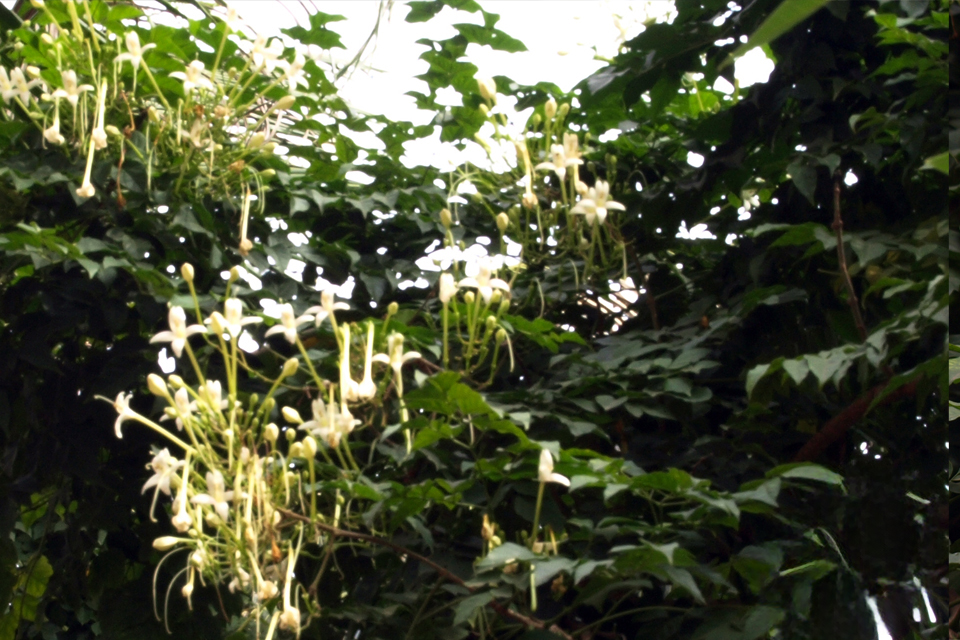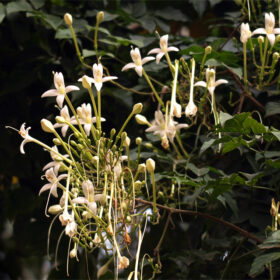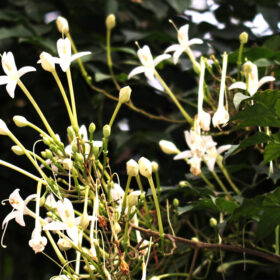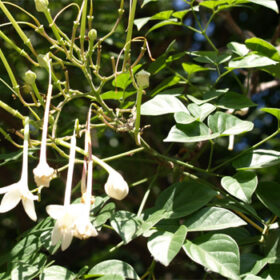Identification
A tree, 8-25 m tall. The bark is thick, with deep longitudinal cracks. Leaves are bipinnate or tripinnate, 0.6-1 m long, usually deciduous during the dry season. Leaflets are ovate-lanceolate, 2-7 cm long, 1.5-3.3 cm wide, with an acute apex and a rounded or nearly truncate base. Leaf margins are entire or irregularly toothed, with hairs on the margin and on the veins of the underside. Inflorescences are racemes at the branch tips, 15-40 cm long. Bracts are small and deciduous. Calyx is campanulate, 2-4 mm high, truncate or with 5 small lobes, curved outwards, persistent in the fruiting stage. Corolla is white, tubular, 6-8 cm high, with glandular hairs inside, and 5 lobes forming two lips: the upper lip with 2 lobes, the lower lip with 3 lobes. Stamens 4 (2 long, 2 short), slightly protruding from the corolla tube. Ovary is cylindrical-conical, glabrous. Fruit is a capsule, 20-40 cm long, 1.5-1.8 cm wide. Seeds are winged, 1.4-3.5 cm long, 1-1.5 cm wide.
Biology and Ecology
Flowering occurs from October to November, with fruit ripening from January to March (of the following year). The tree regenerates by seeds. It is found scattered in moist locations within and near forests, at elevations up to 600 m.
Distribution
- In Vietnam: Gia Lai (A Yun Pa), Đắk Lắk, Lâm Đồng (Đơn Dương), Ninh Thuận, Bình Thuận (Trại Cá), Hồ Chí Minh City, An Giang (Châu Đốc), Yokdon National Park.
- Worldwide: India, China, Myanmar, Thailand, Laos, Cambodia, Malaysia, Indonesia.
Value
A unique genetic resource. Wood is used to make household items. Bark is used as medicine to treat scabies.
Status
A relatively rare species, potentially threatened with extinction due to deforestation and logging.
Conservation Status
VU B1+2e.
Conservation Measures
The species is listed in the Vietnam Red Data Book (1996) as “rare” (R). It is found in Núi Chúa National Park, Ninh Thuận province, and requires protection. There is a need to search for seed sources for cultivation, particularly in areas where it has been previously observed.




